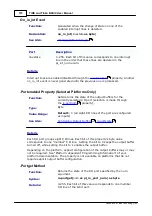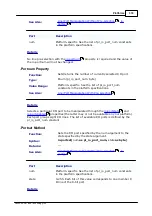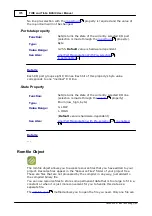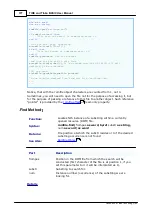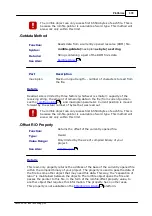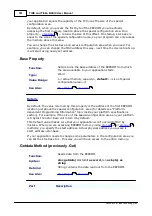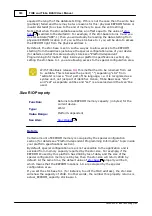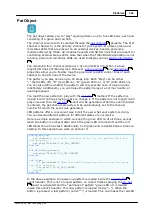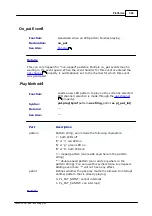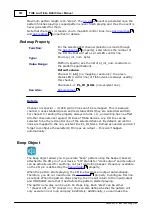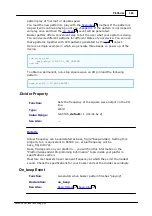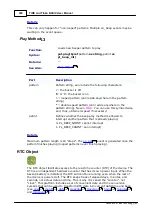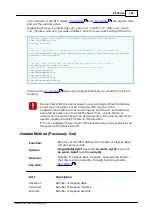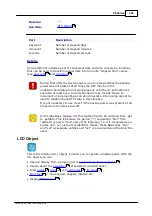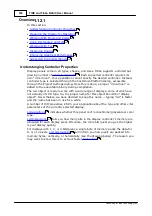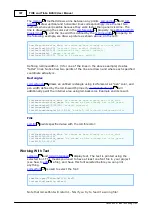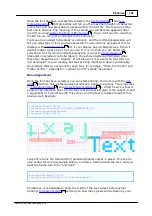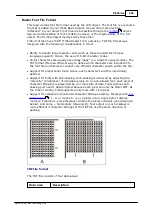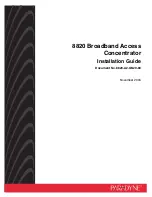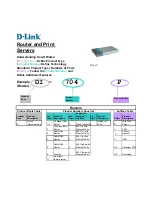
387
TIDE and Tibbo BASIC User Manual
©2000-2008 Tibbo Technology Inc.
Maximum pattern length is 16 "steps". The
event is generated once the
pattern finishes playing. Looped patterns never finish playing and thus the event is
never generated for them.
Note that channels 1-4 require you to map LED control lines. See
and
properties for details.
8.3.9.5
.Redmap Property
Function:
For the selected LED channel (selection is made through
the
property), sets/returns the number of
the I/O line that will act as a red LED control line.
Type:
Enum (pl_int_num, byte)
Value Range:
Platform-specific, see the list of pl_int_num constants in
the platform specifications.
Default values:
Channel 0: (-1) (no mapping, read-only): the green
status LED (control line) of Tibbo device is always used by
this channel;
Channels 1-4: PL_IO_NULL (non-existent line).
See Also:
Details
Channel 0 is special -- its LED control lines can't be remapped. This is because
channel 0 uses standard green and red status LEDs (they are called SG and SR).
For channel 0, reading the property always returns (-1), and writing has no effect.
All other channels use regular I/O lines of Tibbo devices. Any I/O line can be
selected to be the red control line of the selected channel. By default, all control
lines are mapped to the non-existent line PL_IO_NULL. Remap as needed and don't
forget to configure the selected I/O line as an output -- this won't happen
automatically.
Beep Object
The beep object allows you to generate "beep" patters using the beeper (buzzer)
attached to the CO pin of your device. "CO" stands for "clock output" and its output
can be actually used for anything, not just controlling beeper. Frequency available
on the CO pin is defined by the
property.
When the pattern starts playing, the CO line becomes an output automatically.
Therefore, you do not need to use the
property to configure this line
as output. When the pattern stops playing, the line will return to the input/output
and HIGH/LOW state that it had before the pattern started playing.
The pattern you play can be up to 16 steps long. Each "step" can be either
"-" (buzzer off), or "B" (buzzer on). You can also define whether the pattern will
only execute one or loop and play indefinitely. Additionally, you can make the
386
385
387
385
385
388
370

